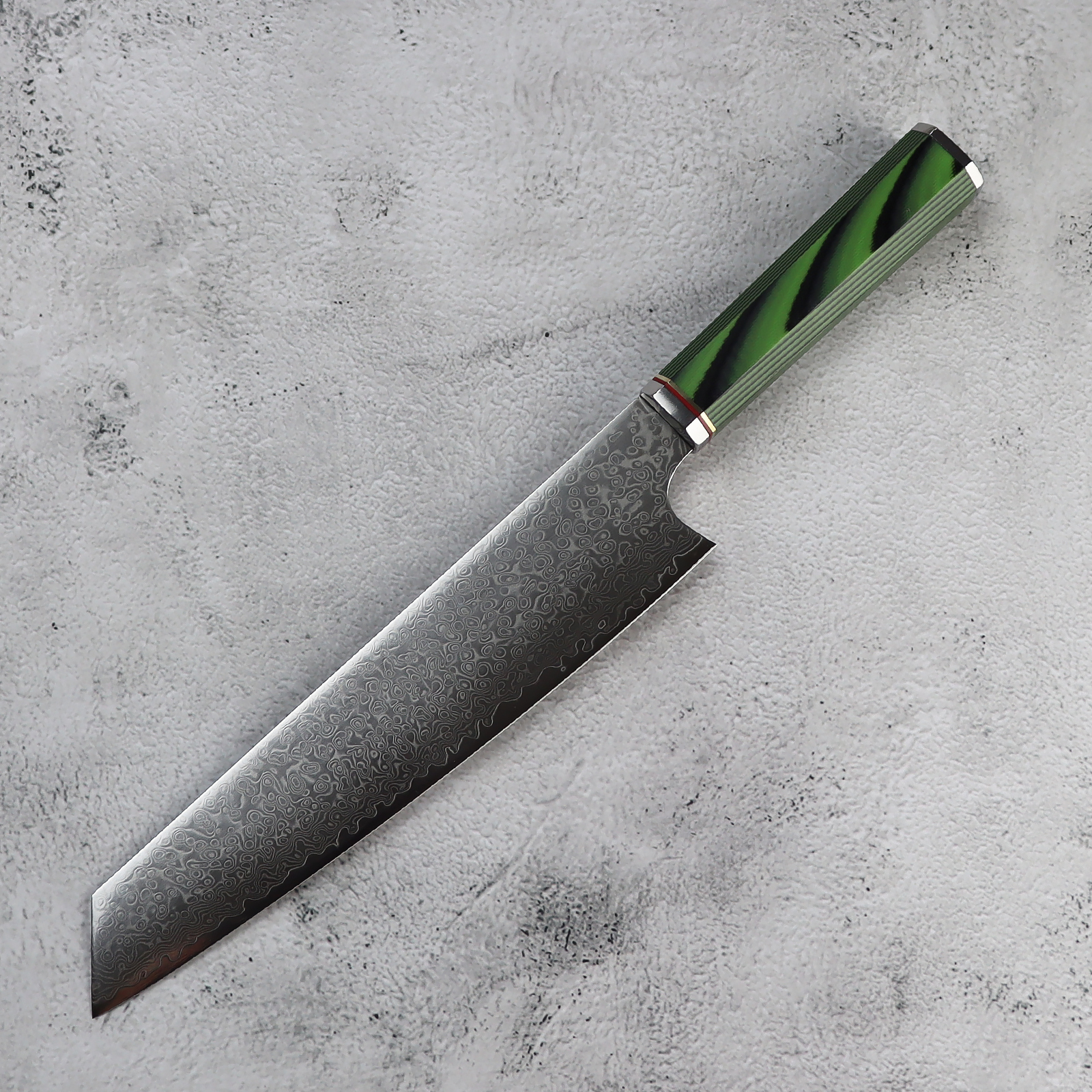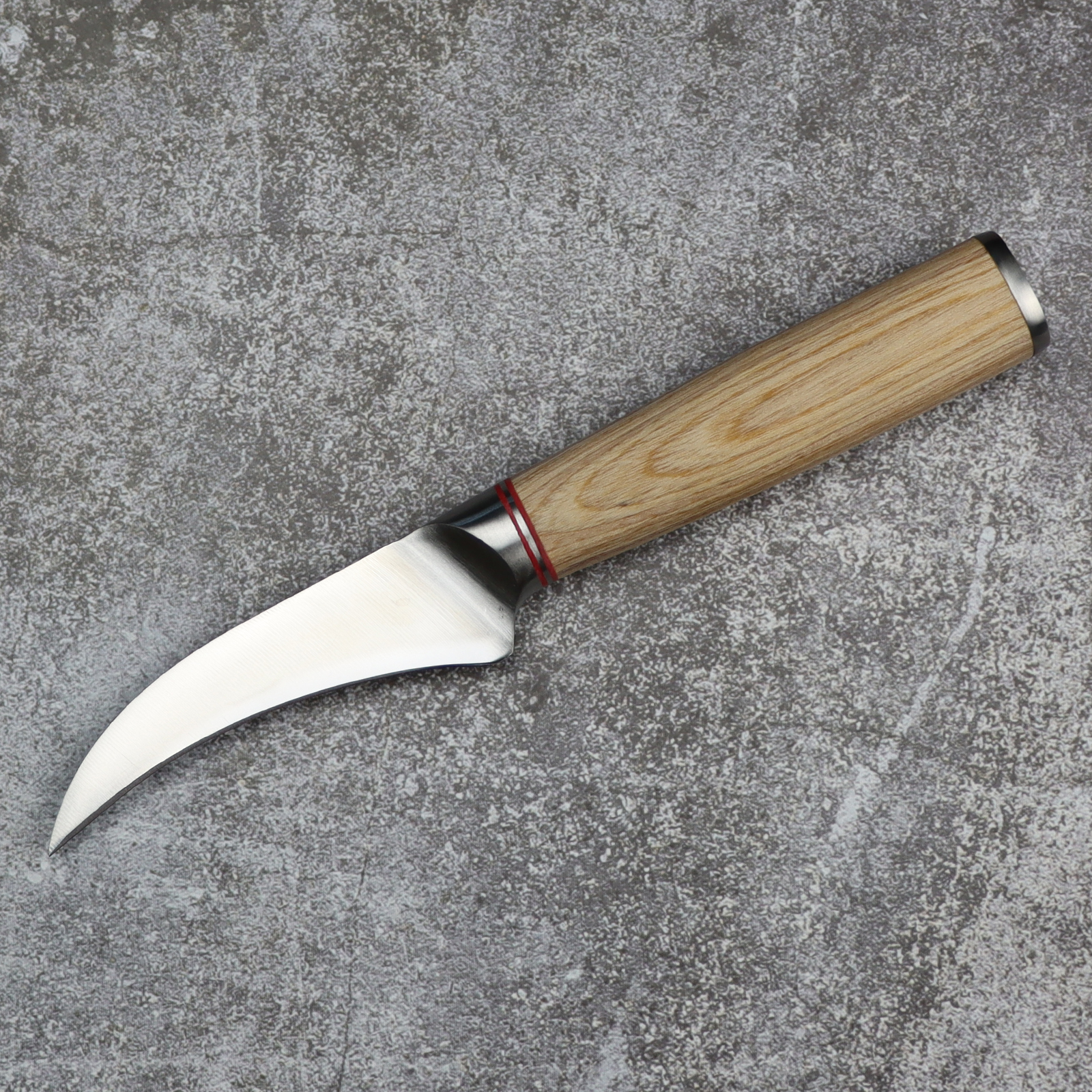The Best Chefs Knife of 2024
Aug 21,2023 | Fzkaly
If you're serious about cooking, then you know that having the right kitchen knife is essential to creating delicious meals in the kitchen. One of the most important knives in any chef's arsenal is a high-quality chefs knife.
A chefs knife is to be a versatile and reliable tool that can handle a variety of tasks in the kitchen. Its main purpose is to chop, slice, and dice a variety of ingredients such as fruits, vegetables, herbs, and meats. A chefs knife typically has a broad, sharp blade that is designed to be used with a rocking motion, allowing the user to quickly and efficiently chop or slice through ingredients.
In addition to chopping and slicing, a chefs knife can also be used for tasks such as mincing garlic, crushing spices, and even breaking down poultry or fish. Its design makes it ideal for tasks that require precision and control, as well as those that require speed and efficiency.
It seems like everyone has their own opinion on what makes the best chefs knife, and indeed, there are many factors to consider when choosing the perfect one for your needs.
Our Top Picks
When it comes to chefs knives, the options are endless. We picked 6 best chefs knives and each one was selected based on quality, preferences, and design.
1. Best Overall - Damascus Chefs Knife 8"
The Fzkaly 8-inch Damascus chefs knife is our top pick for the best overall chefs knife. This knife is known for its exceptional sharpness, balance, and durability. The blade is made from 67-layer high carbon stainless steel, which provides excellent edge retention and corrosion resistance. The handle features a natural wood handle with a distinct mosaic design, solid natural wood has a smooth texture and good water resistance making the handle more durable, stable, and old-fashioned. The full tang handle is mirror-polished for a nice grip.
In addition, this Damascus chefs knife comes with a leather knife sheath for safe storage.
2. Best Design - 8.5" Professional Chefs Knife
The Fzkaly 8.5-inch chefs knife is not only a beautiful knife but also a top-performing one. This Japan-imported knife features a VG10 steel blade with a unique Damascus pattern, providing both sharpness and beauty. The handle is combines various elements, a unique 3D-designed ebony wood handle, green resin, a red G10 ring, plus an elegant copper flower nail. It looks attractive and natural, like a work of art in your kitchen.
In addition, the wide blade design of this knife is much wider than other chefs knife, it can quickly finish the cutting task without the slightest effort.
3. Best Classic - Classic 8" Chefs Knife
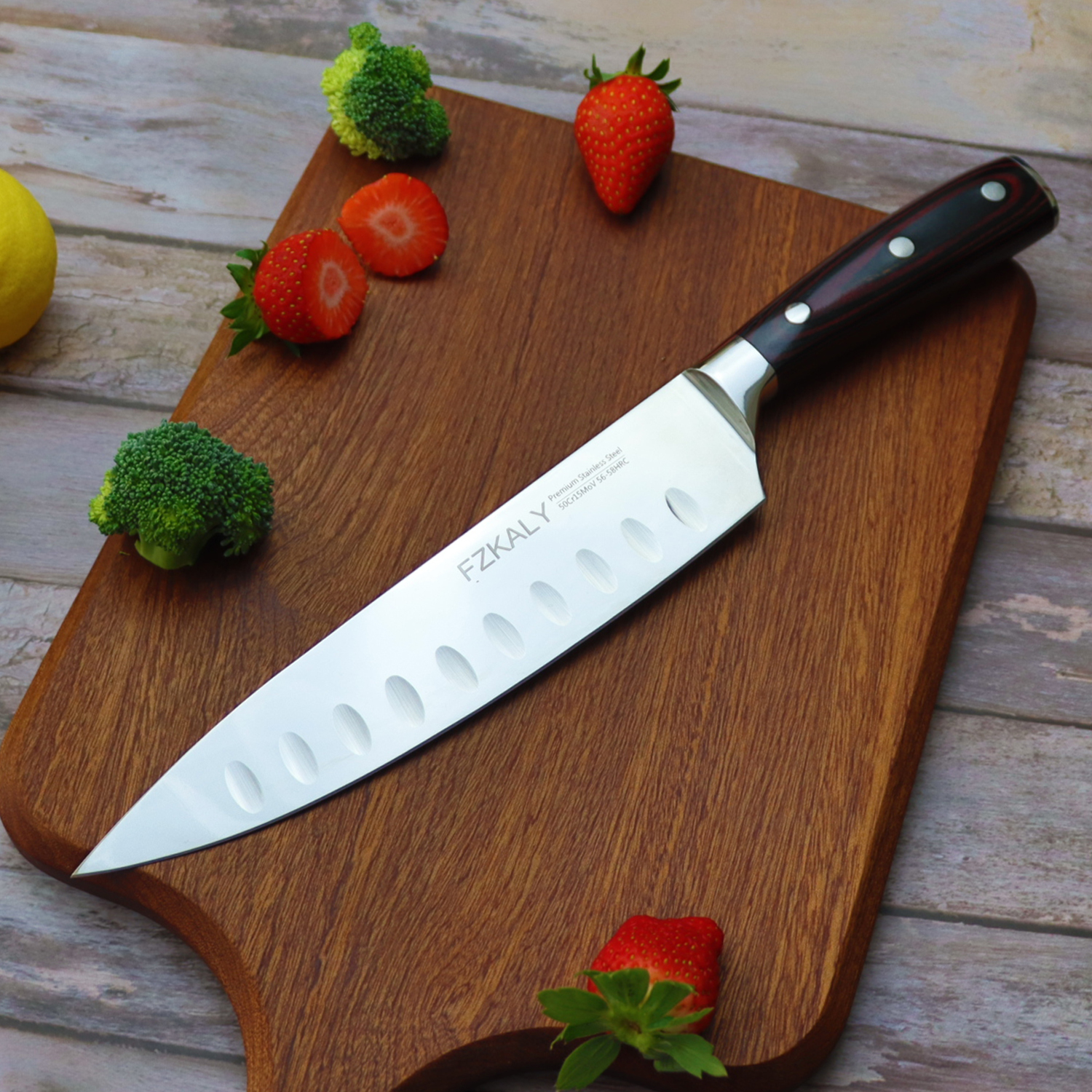 If you're looking for a classic chef's knife that has stood the test of time, the Fzkaly classic German 8-inch chef's knife is an excellent choice. This knife is known for its sharpness, balance, and durability. The blade is made from high-carbon stainless steel and has a full tang for added strength. The handle is made from an ergonomic wood material that provides a nice grip and comfortable to hold. Triple-riveted handles are break-proof, beautiful, and hygienic.
If you're looking for a classic chef's knife that has stood the test of time, the Fzkaly classic German 8-inch chef's knife is an excellent choice. This knife is known for its sharpness, balance, and durability. The blade is made from high-carbon stainless steel and has a full tang for added strength. The handle is made from an ergonomic wood material that provides a nice grip and comfortable to hold. Triple-riveted handles are break-proof, beautiful, and hygienic.
The biggest highlight of this classic chef's knife is the hollow edge design of the blade. The hollow edge is crafted with evenly spaced vertical indentations, which create small air pockets between the blade and the food. These small air pockets gently push food off the blade and minimize friction and create paper-thin slices.
4. Best Forged - Hand Forged Chefs Knife 8.5"
The Fzkaly hand forged 8.5-inch chefs knife is a top-performing knife that is forged from a single piece of high-carbon stainless steel with an HRC of 60±2 and offers great edge retention, wear resistance, corrosion resistance, hardness, and toughness. This chefs knife using the traditional 3-step Honbazuke method. Honbazuke honing originates from traditional Japanese knife production ensure this knife will last longer. The exquisite hammered finish and tapered blade for minimal slicing resistance and minimizes stuck-on food.
Besides, this knife features a full tang for added strength and balance. This hand forged chefs knife will work perfectly for your dailly cutting task.
5. Best Value - Japanese Chefs Knife 9"
The Fzkaly 9" Japanese chefs knife is a great value for those looking for an affordable yet high-quality option. Made from Japanese stainless steel, this knife is incredibly sharp and durable, and its 9-inch blade makes it versatile enough for most tasks in the kitchen. The handle is made from Military-grade G10, with a non slip and easy to use grip, you’ll enjoy both comfort and durability for years to come.
This Japanese chefs knife is renowned for their sharpness, allowing for effortless and precise cuts. The more important advantage is you don't need to resharpen it frequently.
6. Best Silky Cutting - Fzkaly Japanese Chefs Knife 8"
The Fzkaly 8" Japanese chefs knife is perfect for those who need a knife that can make silky-smooth cuts with ease. The blade is made from 67 layers of Damascus cladding, carbon content is about 0.95%-1.05%, making the blade with a razor-sharp edge, incredible edge retention, and striking beauty. The beautiful hand-hammered Damascus pattern greatly increases the aesthetics, but also enhances non-stick properties, making you more effectively finish your daily kitchen cutting task. The handle is made from from G10 with a beautiful red wavy finish, which is both comfortable and durable. The D-shaped ergonomic handle offers perfect control.
In short, this Japanese chefs knife can be used for cutting, chopping, slicing, and mincing and great for handling chicken, beef, vegetables, fruits, fish, and various kitchen foods.
What Factors Should Be Considered When Purchasing Chefs Knife?
Type
One of the first decisions to make when selecting a chefs knife is the type of knife you want. The two most common types are German and Japanese-style knives. German knives are typically heavier and thicker, with a curved blade that is ideal for chopping and slicing. Japanese knives, on the other hand, are lighter and thinner with a straighter blade that excels in precision cutting tasks.
Blade Materials
The blade material is another important factor to consider. The quality of the blade material will determine how well the knife holds its edge and how long it will last. Stainless steel is a common choice because it is rust-resistant and durable. High-carbon stainless steel is also popular choice because it is durable, corrosion-resistant, easy to sharpen and holds a sharp edge for a long time. Ceramic blades are another option, but they are brittle and can break if dropped.
Blade Length
The blade length is another critical factor to consider. Chefs knives are typically between 7 and 12 inches in length, with most falling in the 8-10 inch range. Longer blades are better for chopping and slicing larger items, while shorter blades are more suitable for delicate tasks.
Handle Materials
The handle is an often overlooked but critical component of a chefs knife. The handle material should be comfortable to grip and provide a secure hold while in use. Common handle materials include wood, plastic, and composite materials.
Balance
The balance of a chefs knife refers to how the weight is distributed between the blade and handle. A well-balanced knife will feel comfortable in the hand and reduce fatigue during extended use. To determine if a chefs knife is well-balanced, hold it at the bolster and see if the handle and blade feel evenly weighted.
Comfort
Comfort is essential when selecting a chefs knife, as you'll be using it frequently. Look for a knife that feels comfortable in your hand, with a handle that is easy to grip and a blade that is easy to control.
Budget
Lastly, budget is an important factor to consider when selecting a chefs knife. While high-end chefs knives can be pricey, they often offer superior quality and durability. However, there are many high-quality chefs knives available at more affordable price points, so it's important to balance quality and budget when making your selection.
How to Sharpen Your Chefs Knife?
As any professional chef knows, a sharp chefs knife is essential for efficient and safe cooking. A dull knife can slip and cause injuries, as well as make cutting tasks more difficult and time-consuming. Next, we'll discuss how to sharpen your chefs knife to ensure it's always in optimal condition for use. We'll cover the following steps: selecting a whetstone, determining the correct sharpening angle, mastering the sharpening technique, and testing your newly sharpened knife.
Selecting a Whetstone
A whetstone is an essential tool for sharpening your chefs knife. Whetstones come in various grits, which determine the coarseness of the stone. A rough grit stone (around 1000 grit) is ideal for repairing chips or nicks in the blade, while a fine grit stone (around 6000 grit) is suitable for honing the blade to a sharp edge. A combination stone that has both coarse and fine sides is a great option for those who need to perform both types of sharpening.
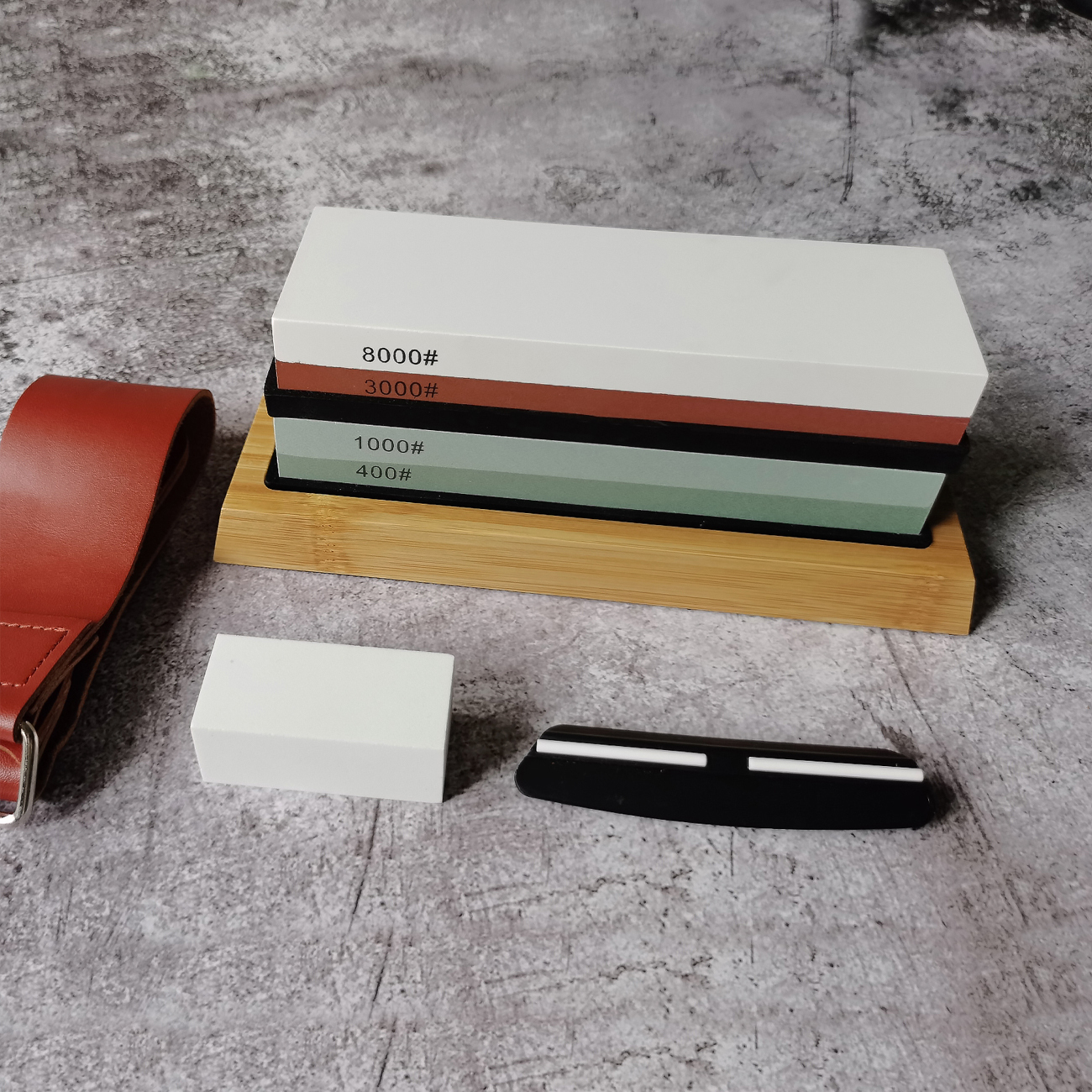
Determining the Correct Sharpening Angle
Determining the correct sharpening angle is crucial to achieving a sharp blade. For most chefs knives, a 15-20 degree angle is appropriate. You can use a sharpening guide to help maintain a consistent angle or use your judgment to keep the angle consistent throughout the sharpening process.
Mastering the Sharpening Technique
To sharpen your knife, start by wetting your whetstone with water or oil. Place the knife on the stone at the desired angle and gently run the blade along the stone in a sweeping motion, using light pressure. Keep the angle consistent and maintain the motion until you have achieved the desired sharpness. Repeat this process on both sides of the blade, using a fine grit stone to hone the edge.
Testing Your Newly Sharpened Knife
After sharpening your knife, it's important to test it to ensure it's sharp enough for use. A simple test is to try slicing through a sheet of paper with the blade. A sharp knife will slice through the paper with ease, while a dull blade will struggle or tear the paper.
Sharpening your chefs knife is an important task that should be performed regularly to maintain its functionality and safety. Remember to take your time and exercise caution during the sharpening process to avoid any accidents.
How Do You Take Care of a Chefs Knife?
Taking care of a chefs knife is crucial to ensure it lasts for a long time and performs optimally. Here are some tips on how to take care of a chefs knife.
Don't Put Your Chefs Knife in the Dishwasher
While it may be tempting to put your chefs knife in the dishwasher for convenience, this is not recommended. The high heat and harsh chemicals in the dishwasher can damage the blade and handle of your knife. Hand-washing your knife with warm, soapy water is the best way to keep it clean.
Clean and Dry Your chefs knife Properly
After using your knife, it's important to clean and dry it thoroughly. Avoid leaving it wet or soaking in water, as this can lead to rusting. A quick rinse and dry with a towel is all that's needed. Be sure to also dry the handle and any crevices where water can collect.
Use Mineral Oil to Prevent Rusting
To prevent rusting on your chefs knife, use mineral oil to protect the blade. After cleaning and drying your knife, apply a small amount of mineral oil to the blade and wipe off any excess with a clean cloth.
Use a Cutting Board
Using a cutting board is crucial for preserving the sharpness of your knife. Cutting on hard surfaces like plates or countertops can dull the blade quickly. A wooden or plastic cutting board is recommended, as it's gentle on the knife and easy to clean.
Don't Use the Wrong Knife for the Wrong Task
Using the wrong knife for a task can not only damage your knife, but also create an unsafe situation. For example, using a chefs knife to cut through bone can damage the blade and cause it to chip or break. Be sure to use the appropriate knife for the task at hand.
Store Your Chefs knife Safely
When not in use, store your knife in a safe place to prevent damage or injury. A knife block or magnetic strip is a great option for storing your chefs knife safely. Avoid leaving it loose in a drawer or on a countertop where it can be easily knocked over.
Regular Sharpening
Regular sharpening is crucial to maintaining the sharpness of your chefs knife. Depending on the frequency of use, you may need to sharpen your knife once a week or once a month. A sharpening stone or honing steel is recommended for regular maintenance. Be sure to follow the proper sharpening technique and angle for your knife.
Conclusion
The best chef's knife is the one that feels comfortable in your hand and meets your specific needs in the kitchen. The Fzkaly brand offers a range of high-quality chefs knives that cater to different needs and preferences. Whether you're looking for a knife that offers great value, is lightweight, provides silky-smooth cuts, or has a good weight to it, there's an option for you.

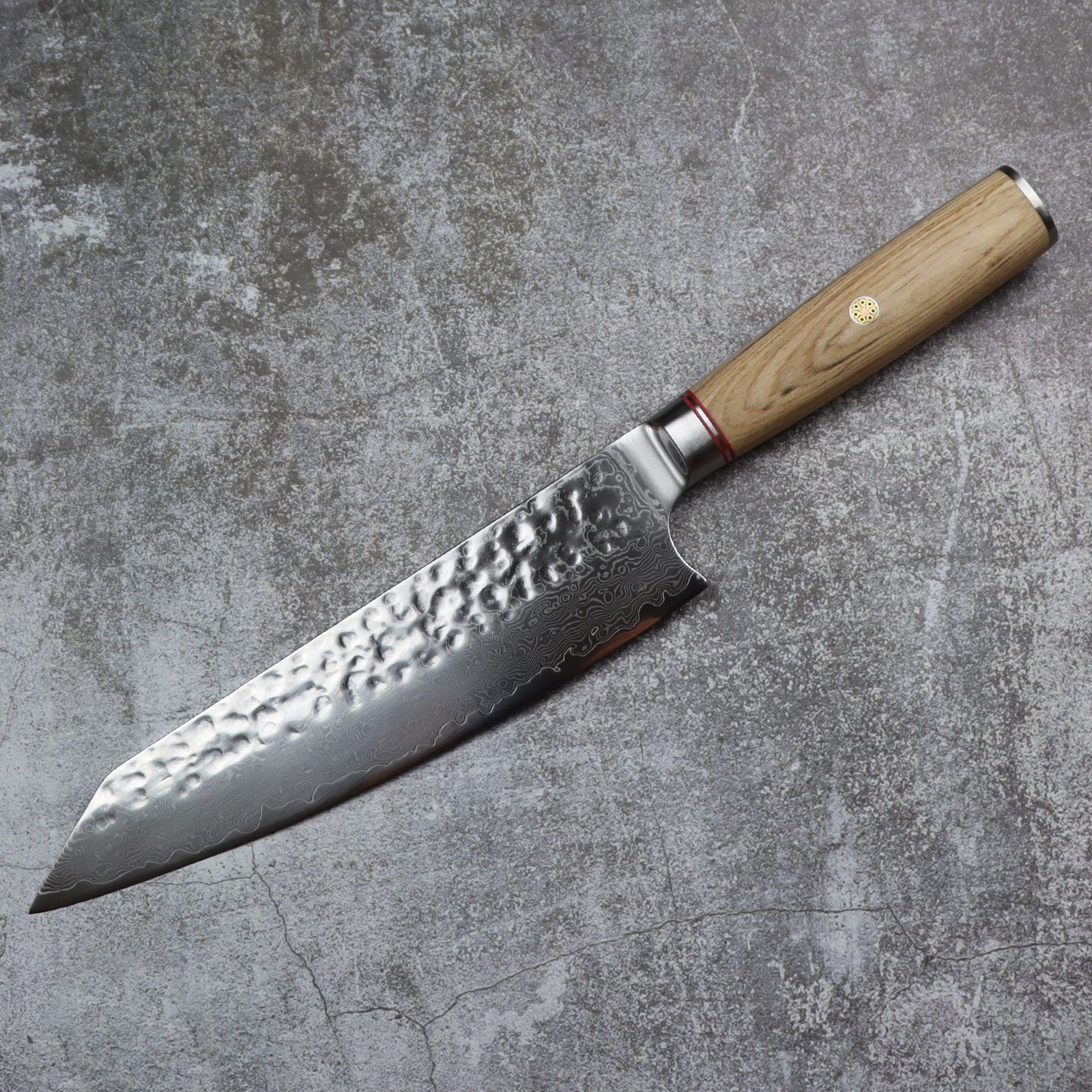
_1080x.jpeg?w=1000&h=1000)

